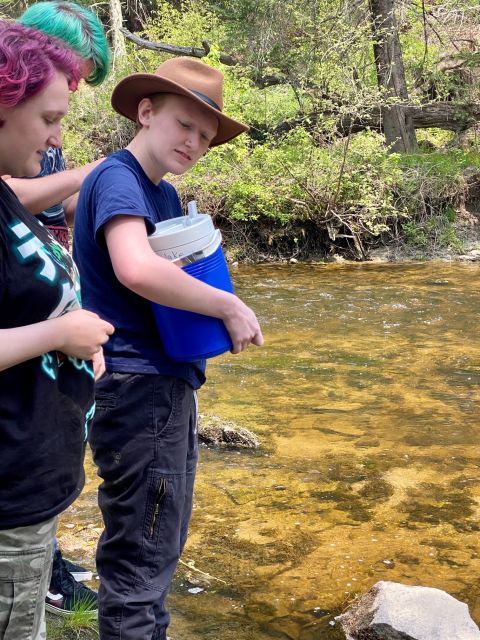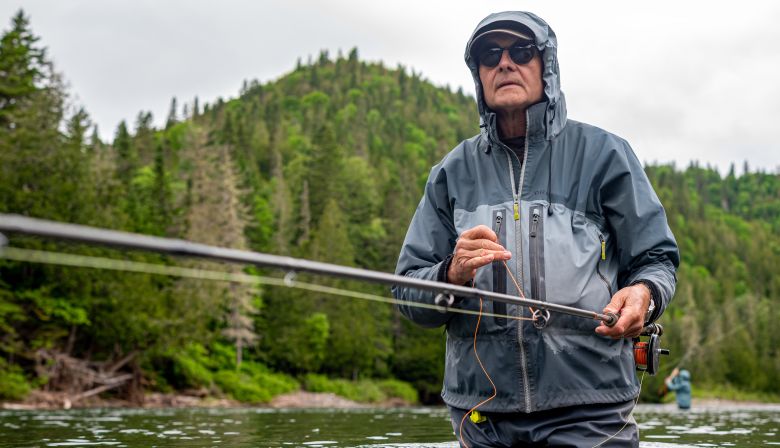
Subscribe & stay up-to-date with ASF


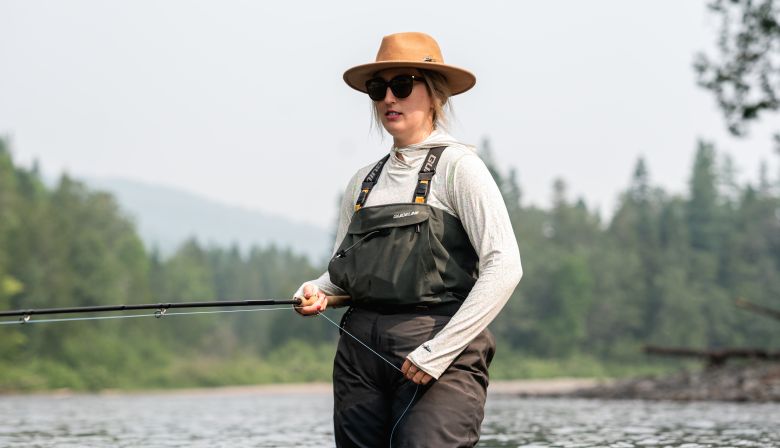
In the heart of Gaspé, I found myself surrounded by an array of intriguing characters, all willing to share their time and knowledge with me. CD and Tracey Clarke, both ASF directors, opened the doors of their rental chalet to offer me a welcome escape from my trusty—but rather firm—truck-bed accommodations. It was an act of kindness that made me briefly question whether they thought I was an endangered species in need of their conservation efforts!
Then, there was Ben Carmichael, Hoagy Carmichael (wizard of the Grand Cascapédia), Dave Cole, Jonas Clark (of the famed www.spinozarods.com), Anton, and their companions. They brought a delightful blend of camaraderie and socializing to the riverbank, extending their warmth into the evening by inviting me back to their cabin for a few beer and a much needed meal.
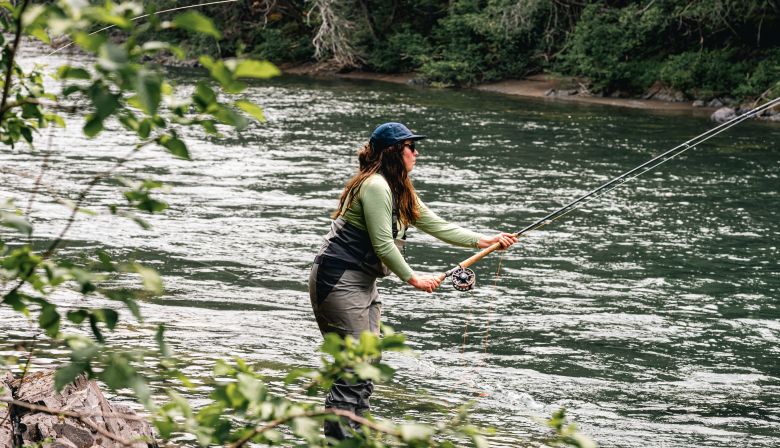
Finally, but by no means least, the dynamic duo of Kamille Juneau-Richer and Amy Bujold generously cast aside some time to, well, cast a fly with me. They graciously shared their salmon journeys – stories that added a rich, personal flavor to my own journey.
This eclectic mix of individuals truly enriched my time in Gaspsé, weaving a tapestry of experiences that stretched from the heartwarming to the downright hilarious. They certainly made sleeping in the back of my truck seem like a small price to pay for such company, and made the experience memorable in every sense of the word.
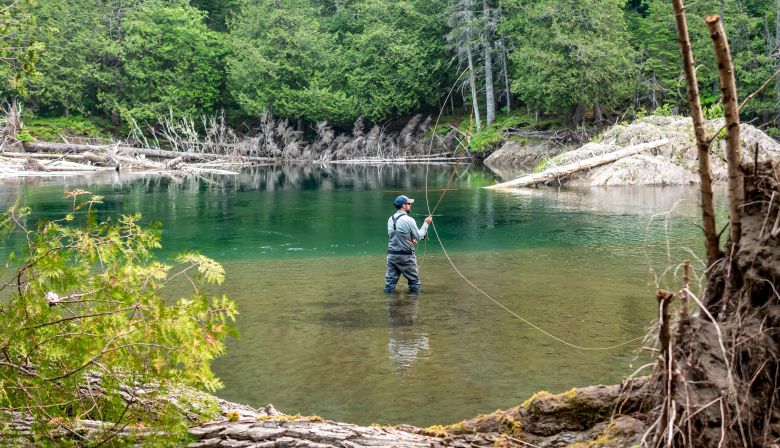
In my conversations with all these people, a theme continually resurfaced. We invariably landed on concerns related to access and what might be termed the ‘over-adulation’ of the rivers in the Gaspé Peninsula. This sentiment was further echoed in several emails I received in the wake of last week’s edition of Rivernotes. The majority were amiable, yet numerous responses hinted at an overcrowding issue on the river. Although this viewpoint didn’t align with my own observations, it undoubtedly stirred up thoughts about the nature of access.
As ASF’s Marketing Manager, my mission to champion the cause of wild Atlantic salmon. I must cast a wide net—not in the rivers, but in the realm of public interest, drawing in as many supporters as possible.
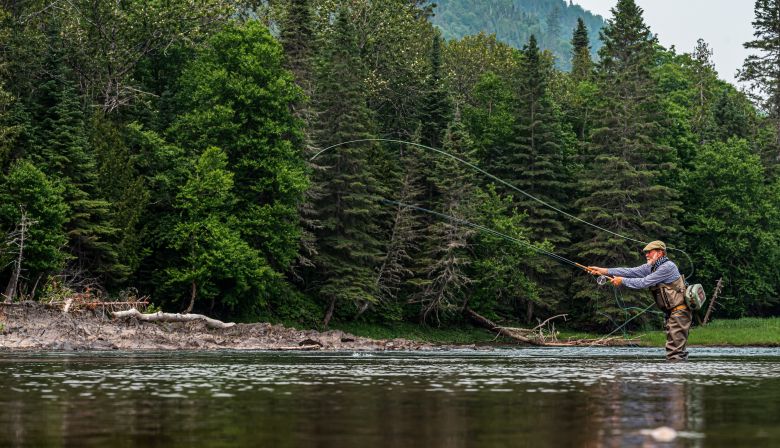
I’m inclined to believe that I’m not alone in this conviction —that the more individuals who become invested in the future of wild Atlantic salmon, the greater our chances of restoring these magnificent creatures to their historic abundance and range.
This, after all, is the ultimate objective of our mission at ASF. We envision a future where people partake in salmon fishing for various reasons: meaningful time in the outdoors, a food source, and most importantly, as a sustainable cornerstone of local economic and cultural value.
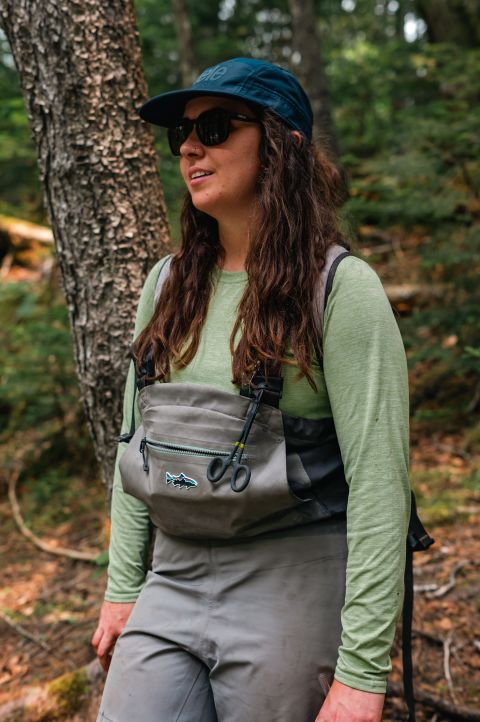
And here lies my conundrum. I empathize with those who have grown up on these prime Atlantic salmon rivers and feel their home water is in danger of being overrun. At the same time, I recognize that if we’re to succeed in restoring the salmon population to its former abundance, I need to encourage people to venture to locations where they can have firsthand experiences with Atlantic salmon.
Can we open our arms to a new demographic, igniting a passion for Atlantic salmon in the next generation?
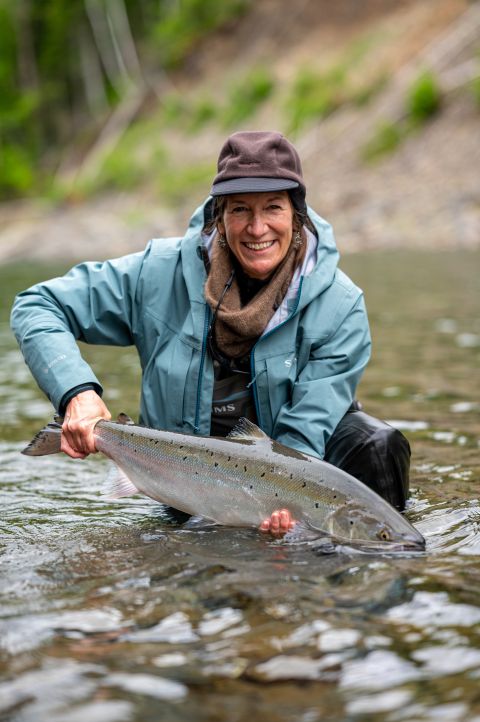
This may mean welcoming more visitors to our cherished locales. But if we succeed in our ambitious mission – a mission neither simple nor short-term – we could facilitate access to rivers throughout the salmon’s historic range. This would ultimately relieve the strain on a few overtaxed rivers and resurrect waters long closed to fishing.
As evidenced by my experiences relayed above, new faces on the river mean new connections, new friendships, and new shared experiences. These interactions aren’t just about the thrill of landing a salmon; more importantly, they’re about creating the meaningful relationships and memories that enrich our lives. Could this perspective perhaps alter how we view the issue of increasing accessibility?
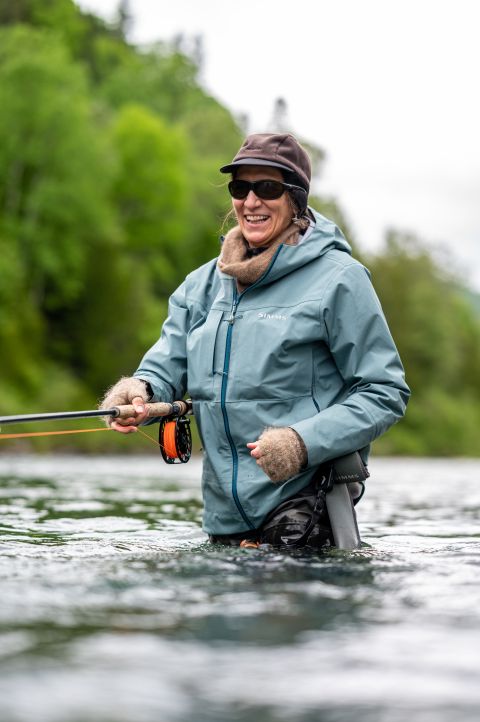
Have any thoughts about river access and growing the community of people who care about wild Atlantic salmon? I’d love to hear from you!
I look forward to seeing you all on the river!
Be well and tight lines!
Peter

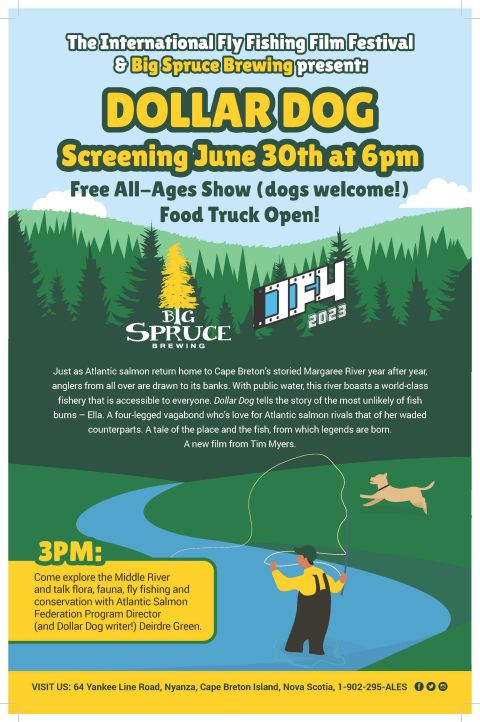
IF4 at Big Spruce Brewing
Join us this Friday on June 30th, 6pm at Big Spruce Brewing in Baddeck, Cape Breton for an exciting showing of the International Fly Fishing Film Festival! Admission is free, and we encourage donations to support our cause. Get ready to enjoy a fantastic evening filled with captivating films, refreshing beer, delicious food, and exciting gear giveaways. Don’t miss out on this incredible event!
Follow this link to sign up and make a donation! https://qrcodes.pro/w0hScc
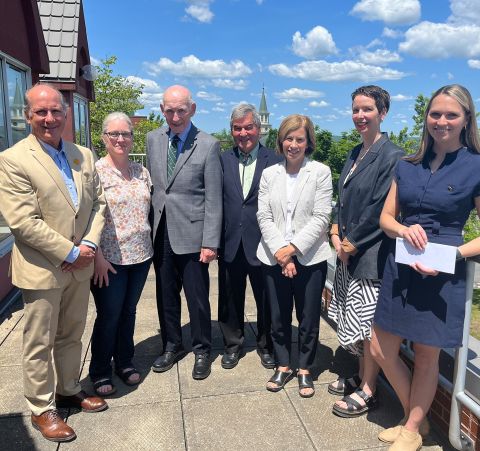
Bud Bird was passionate as he spoke of his motivation for creating these endowments. “I hope that they (the Wild Salmon Grants) will encourage Indigenous contributions of research and knowledge towards the mission for conservation and enhance the process of reconciliation within the wild salmon community, both Indigenous and non-Indigenous members alike. I truly believe that only through such a united sense of working together in partnership among all concerned can the wild Atlantic salmon resource be fully recovered and permanently sustained.”
Wolastoqey elder and former Lieutenant Governor Graydon Nicholas, who was in attendance, called this gift a great example of “reconcili-action.”
ASF and the Miramichi Salmon Association (MSA) will each administer one of the endowments, which will be available to students starting this autumn. The annual Wild Salmon Grants of $5000 will fund research projects or experiential learning opportunities that include traditional Indigenous knowledge of conservation, rivers, and natural spaces. The results of the students’ work will be shared through the salmon organizations for conservation and public advocacy.
To learn more – https://www.stu.ca/news/all-ne…
As June has been a little cooler this year, and with the latest rain, rivers all over the province have been keeping a good water level. This gives a sense of encouragement, and hope, that it will help with water conditions for the upcoming warmer weather. That said, we’ve all seen how fast the water can drop with last weekend’s heat wave.
Having met and discuss with many camp owners lately, the common threads have been that they were seeing fish, but they were trekking straight through. A few anglers were lucky enough to land fish, because of being at the right place at the right time, as fish were not holding for very long, taking advantage of higher water to migrate upstream. This has been confirmed on both the Restigouche and Miramichi watersheds.
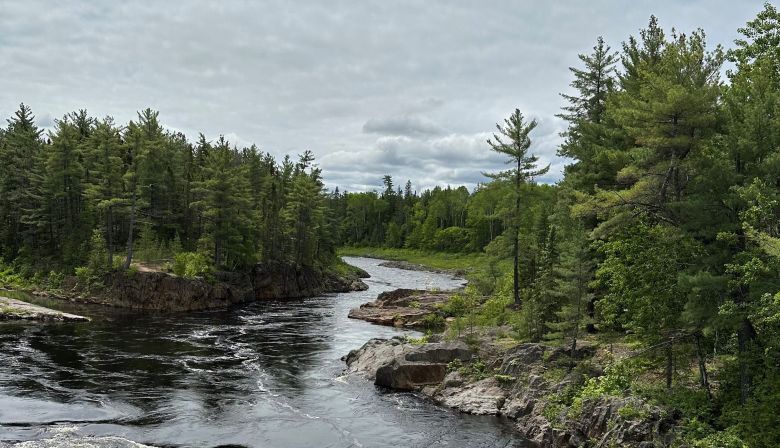
All are encouraged in seeing the summer arrival of the king of the river for another season and are excited to spending time on the river. Looking forward to seeing official data on returns as we move into summer.
On June 14th, the Pokemouche River Environmental Management Comittee (www.cgerp.ca) held its Annual General Assembly at the Inkerman Community Center, where they presented the different projects and accomplishments during 2022-2023.
This year’s guest speakers were Mélanie Daigle, Stéphanie Poirier and Alain Landry from the department of Fisheries and Oceans Canada. Their presentation was related to the diffrerent commercial and recreational fisheries on the Pokemouche river and the different corresponding rules and regulations for the different species.
All together it was a great evening for many discussions around the long term protection and conservation of our beautiful river.
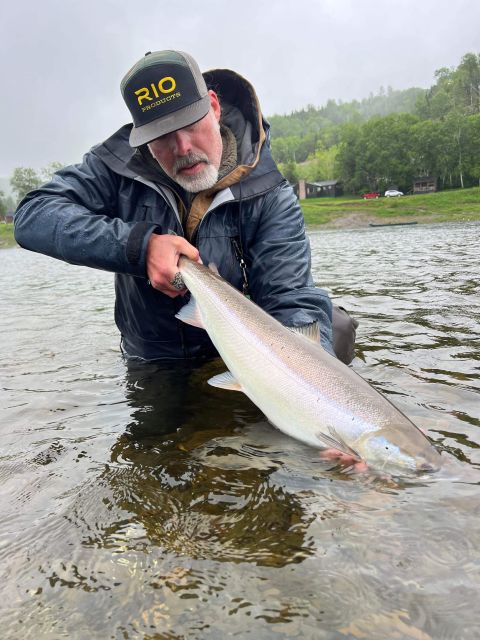
La rivière Pokemouche / Pokemouche River: Le Comité de Gestion Environnementale de la Rivière Pokemouche (www.cgerp.ca) a présenté les projets réalisés durant l’année 2022-2023 lors de son assemblée générale annuelle qui s’est tenue le mercredi 14 juin 2023 au centre communautaire d’Inkerman. Les conférenciers invités (Mélanie Daigle, Stéphanie Poirier et Alain Landry) de Pêches et Océans Canada ont offert une présentation sur les Pêches commerciales et récréatives ainsi que les règlementations dans la rivière Pokemouche. Ils nous ont donné des détails sur les différentes espèces pêchées commercialement (gaspareau, anguille et éperlan) et récréativement (Bar rayé, salmonidés et mye) dans le bassin versant de la rivière
Pokemouche ainsi que les différentes réglementations qui s’appliquent à ces pêches. Une très belle soirée remplie de conversation très intéressante afin de protéger notre belle rivière.
Charles Cusson, Quebec Program Director Reports:
Salmon migrations are still very late and water conditions and flows on most rivers in Quebec continue to be very much lower than normal for this time of the season.
Striped bass seem to be increasing in salmon regions this year. Several salmon anglers fishing in Gaspésie, in the lower St. Lawrence and on the North Shore, have reported catching bass in freshwater since the beginning of June. Please report your catches to the manager of the river where you are fishing. To learn more about the angling regulations for striped bass, visit https://www.quebec.ca/en/tourism-and-recreation/sporting-and-outdoor-activities/sport-fishing/zones-periods/particular-rules/zone-1

As of June 26, SOGERM (Société de gestion de la rivière Matane) is reporting 133 large salmon having migrated through the fishway. 230 large salmon had been counted on the same date in 2022.
The results from the Matapédia show that 42 releases have been recorded until June 26 since the start of the season. Traffic is on the rise, there are already 2,238 fishing days sold compared to 1,919 during the same period in 2022.
Since May 19, as of June 26, fishers on the Causapscal River have reported 123 fish landed, including 72 releases to date.

In the Saguenay region, salmon have begun to appear in the Sainte-Marguerite, À Mars, Petit-Saguenay and Saint-Jean rivers.
https://www.facebook.com/Rivieramars/videos/780403103552715
A worrisome trend is emerging on certain rivers in Quebec such as the York,Dartmouth, Saint-Jean, Matane and the Bonventure. Many anglers are not reporting their releases, which has forced salmon river managers to take action. – Please Read more Here
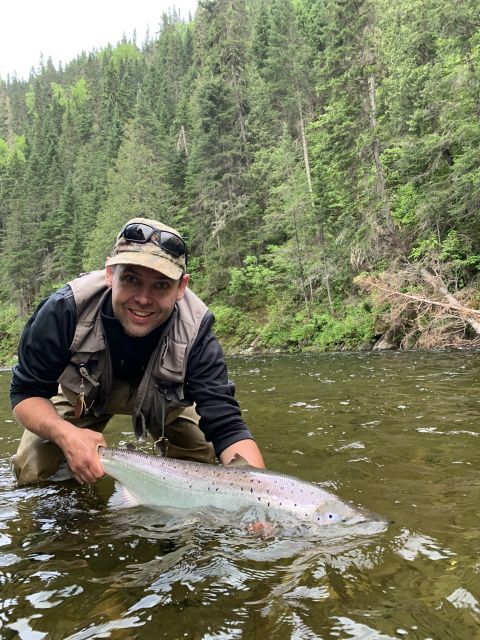
En date de la publication de ce compte rendu, les montaisons demeurent tardives et les conditions et les débits d’eau sur la plupart des rivières au Québec continuent d’être plus bas que la normale pour cette période de la saison.
La présence du Bar Rayé dans les régions saumon s’accentue cette année. Plusieurs saumoniers pêchant en Gaspésie, dans le bas St-Laurent et sur la Côte-Nord, ont signalé le fait d’avoir pêché des Bars en milieu d’eau douce depuis le début du mois de juin. Veuillez svp rapporter vos prises au gestionnaire de la rivière où vous pêchez. Afin d’en savoir plus au sujet de la règlementation, visiter le https://www.quebec.ca/tourisme-et-loisirs/activites-sportives-et-de-plein-air/peche-sportive/zones-periodes/zones-de-peche/zone-1 .
En date du 26 juin, la SOGERM (Société de gestion de la rivière Matane) a publié le fait que 133 grands saumons ont franchi la passe migratoire. 230 grands saumons avaient franchi l’amont de la passe à pareille date en 2022.
Les résultats en provenance de la Matapédia démontrent le fait que 42 remises à l’eau ont été enregistrées jusqu’au 26 juin depuis le début de la saison. L’achalandage est la hausse, il y a déjà 2 238 jours pêche vendue comparativement à 1 919 pendant la même période en 2022.
En date du 26 juin, depuis le 19 mai, les pêcheurs de la rivière Causapscal ont déclaré 123 prises dont 72 remises à l’eau à ce jour.
Dans la région du Saguenay, les saumons ont commencé d’apparaitre dans les rivières Sainte-Marguerite, À Mars, Petit-Saguenay et Saint-Jean. https://www.facebook.com/Riviereamars/videos/780403103552715
Sur les rivières du Grand Gaspé, Bonaventure et Matane, il y a une tendance inquiétante qui se manifeste. Les pêcheurs, en grande partie, ne font pas la déclaration de leurs remises à l’eau, ce qui a forcé les gestionnaires de rivière à saumon d’agir. Cliquer l’hyperlien ci-dessous pour en savoir plus.
Deirdre Green, NS Program Director, participated as an instructor in a local fly-fishing event organized by Atlantic Women on the Fly (AWOTF). Deirdre shares:
I can honestly say I have never seen so many women with fly rods in hand as I did last weekend at Liscombe Lodge. When I first caught the salmon bug, I rarely encountered another woman on the river and never one fishing alone. I am proud and ecstatic to say that each year since, I have watched a significant increase in woman anglers on our waters. A credit to the mentors who do not discriminate in whom they teach and welcome to the river, and to AWOTF coordinators, Mary Atkinson and Sali Cunningham. These two women put their heart and soul into organizing learning events like these.
Standing in the St. Mary’s River, watching other mothers learning and growing as competent and confident anglers was the highlight of my season thus far. Together, we reviewed gear, fly rods, fly selection, how to read the water, various casting techniques and much more. Everyone received tailored and one-on-one instruction, where questions could be asked and personalized casting tips were offered.

On Sunday, the thirty-four women in attendance rotated between fly tying, spey casting and etymology clinics before heading home. Throughout the 3-day event there were plenty of opportunities for socializing and I took note of how comfortable everyone was. Wherever I looked, I saw laughing and smiling faces, beaming with pride as they practiced a new skill amongst friends.
If you have an opportunity to attend a women’s fly-fishing event in the future, as either an instructor or a participant, I highly recommend it. You will never regret the time you spend sharing and learning with others.

What could possibly link a housing shortage and the resurgence of Wild Atlantic Salmon in Nova Scotia’s Sackville River? Here’s how these two disparate topics intersect.
Over the past 35 years, the Sackville Rivers Association has worked diligently to restore the presence of Wild Atlantic Salmon in the Sackville River system. This was a challenging task, considering the dismal state of the river when the initiative began. They started with removing 50 rusted vehicles from the river. Now, decades later, salmon have indeed returned to Sandy Lake, with the first adult Atlantic salmon of the season spotted on June 21.
However, despite these remarkable conservation successes, the area’s burgeoning housing crisis threatens to unravel these efforts. From the early 70s, efforts to protect the Sandy Lake-Sackville River watershed have been underway. Unfortunately, parts of the watershed were rezoned for housing development. Now, developers own much of these lands, and the Province of Nova Scotia’s Housing Task Force aims to fast-track housing development in these Special Planning Areas.
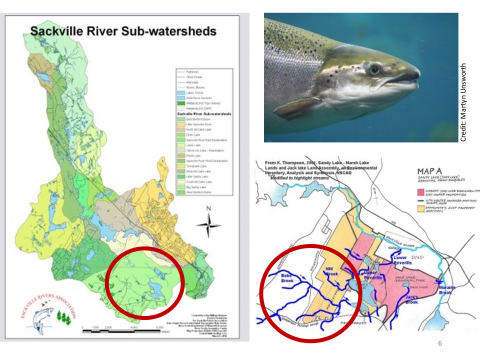
The potential impact? The risk of declining water quality at Sandy Lake and throughout the Sackville River watershed, potentially undoing the restoration work of the past 35 years.
The late Mike Crosby worked tirelessly to protect the area from ill-informed development decisions. Now, a coalition of 31 groups supports the ongoing work to preserve the exceptional biodiversity at Sandy Lake-Sackville River.
Before irreversible actions are taken, politicians must comprehend the detrimental consequences of a housing development in this area. The Province is eyeing “shovels in the ground” by Spring 2024, and it’s our responsibility to intervene before it’s too late.
We’re calling on citizens and groups to write letters to the Nova Scotia government and City of Halifax to ensure Sandy Lake is removed from the Special Planning Areas list and preserved within the Regional Park boundary.
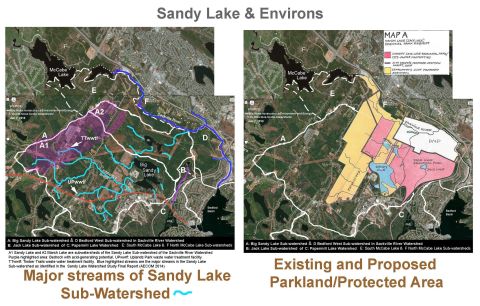
The housing crisis demands attention, but Sandy Lake is not the place for it. We need to recognize what’s at stake here and find a sustainable solution that doesn’t compromise the environment. The return of Salmon to Sandy Lake shows what’s possible with conservation efforts. Let’s ensure that the voices of many keep them there.
You can make your voice heard by reaching out to:
Premier Tim Houston: PREMIER@novascotia.ca
Housing Minister John Lohr: DMAMIN@novascotia.ca
Your local MLA in Nova Scotia
Please also copy your letters to the City Clerks’ office (clerks@halifax.ca) and request that they be forwarded to all councillors, CAO O’Toole, and the Mayor.
For a deeper understanding of the Sandy Lake Regional Park history and the importance of preserving these lands, please refer to these resources:
Nature Nova Scotia’s Blog
Ducks Unlimited Video
Scientific Study on Sandy Lake’s Oxygen Levels
Sandy Lake Ecological Features Assessment
Park Planning Study
Don Ivany, Newfoundland and Labrador Program Director Reports:
Almost a month has passed since the Recreational Salmon Fishery opened on Newfoundland Island, and it’s been an unusual start to the season. Initially, coastal sea ice seemed to have melted away when the season began on June 1, but surprisingly, it resurfaced recently in places like Lewisporte and White Bay, only to retreat offshore again.
Contrary to last year’s strong June start marked by plentiful fish, cold water temperatures, and healthy water levels, this year started similarly but with noticeably fewer fish sightings up until mid-June. This observation aligns with DFO’s first counting fence report for the season (see the DFO Counting Fence Report for NL up to June 18, 2023), indicating lower returns than the same period last season.
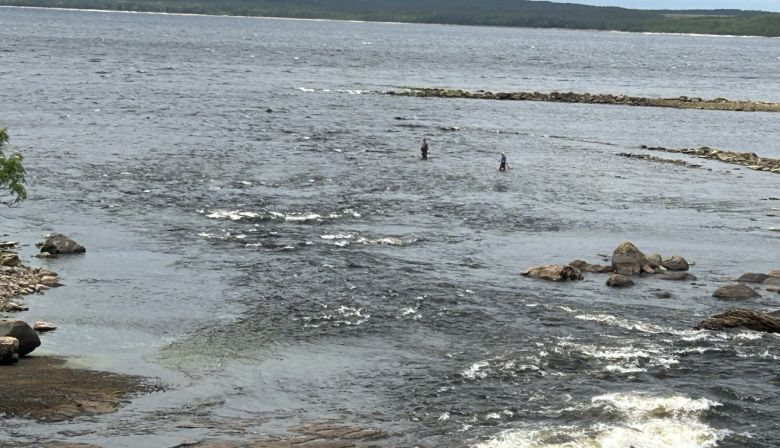
Late June brought heavy rain to some areas, causing rivers to swell, while others saw dwindling water levels due to lack of rain. However, by the third week of June, anglers reported a rise in fish sightings and improved success rates.
Anglers such as Wayne Fitzpatrick and Keith Piercey (SPAWN) reported successful fishing streaks at Harry’s River and Big Falls on the Humber River, respectively. Despite high water levels, Dave Vardy also had a fair catch at Raggot Harbour River and heard reports of significant catches at Mill Brook. Meanwhile, the Exploits River experienced high water levels early last week but has since returned to good fishing levels, with reports of strong fish runs and successful catches.
Conversely, angling opportunities on the Gander River remain limited due to high water levels, although this is expected to change as levels recede and normal runs start in early July.
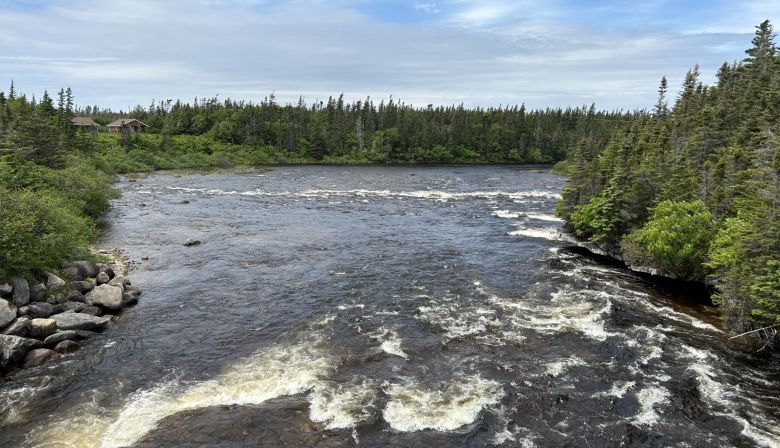
In Labrador, the fishing season opened on June 15th, but fish presence in rivers has been low. Long-time guide Lester Butt reports no fish sightings or catches in the currently low Forteau River. The Pinware River has seen only a few fish hooked, which deviates from its usual large fish run at this time of year.
In summary, while salmon returns were early in Maritime Provinces, Quebec, and Maine, Newfoundland seems to be experiencing the opposite, with late salmon returns this year. It’s indeed been an unconventional June for Newfoundland’s salmon fishing season!
John Burrows, Executive Director of US Operations, Reports:
Recently, a remarkable spectacle unfolded in Cobbossee Stream, a tributary of the Kennebec, when hundreds of Atlantic sturgeon embarked on their spawning journey. This remarkable event can be traced back to a pivotal decision made in 1999—the removal of the Edwards Dam.
The Edwards Dam had long served as a significant barrier for sturgeon populations, inhibiting their migratory and spawning patterns. The decision to dismantle it in 1999 proved to be a crucial turning point for both Atlantic and shortnose sturgeon populations in the Kennebec and other Maine rivers.
Both species, protected under the Endangered Species Act (ESA), found the Kennebec and Merrymeeting Bay complex to be a safe haven, resulting in the only substantial spawning populations in Maine. The river’s ecological recovery post-dam removal allowed for the growth and expansion of these endangered species.
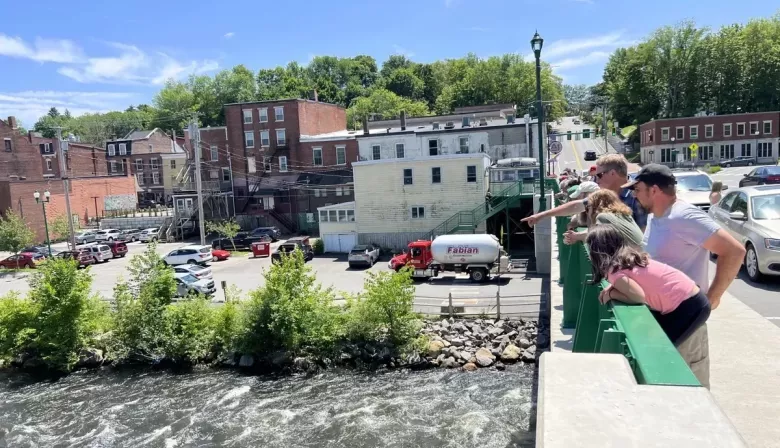
Interestingly, the fate of the sturgeon was a key environmental factor in denying the Edwards Dam a new federal license from the Federal Energy Regulatory Commission (FERC) back in the late 1990s. The dam’s removal highlighted the intricate balance between human infrastructure and environmental preservation, reminding us of the profound impacts our decisions can have on nature’s delicate rhythms.
This recent spawning spectacle serves as a reminder of the success of past conservation efforts and highlights the potential for further victories in the future. It underscores the need to continue prioritizing and investing in efforts that maintain and restore our precious water ecosystems.
Over the past week, the river’s level has gradually decreased from its peak of 50,000 cubic feet per second (cfs) on June 19th. The fish lift reopened on June 22nd after the flow dropped to below 24,000 cfs. As of now, the river’s temperature stands at 19.4°C and the flow rate is approximately 23,600 cfs. This places the current flow rate between the 75% and the historical maximum discharge levels, based on data collected over the past 37 years (according to the USGS current conditions).
It’s anticipated that the flow conditions will remain relatively high over the next week, due to the forecast of multiple showers and thunderstorms in the coming days. The fish lift resumed full operations again on June 22nd and functioned throughout the past week until this morning (June 28th) when it had to be temporarily shut down due to high flows. However, it has since reopened.
Since the last report, 17 Atlantic salmon, including two sea-winter adults (2SW) and three grilse (1SW), were captured, bringing the total count for the 2023 season to 112. One recaptured salmon was also reported this past week. Sadly, a dead 2SW Atlantic Salmon was discovered below the Lockwood dam within this past week. The cause of death appears to be a hooking wound, suggesting that the fish likely came from a hatchery. All the captured salmon were released into the Sandy River, which has a current temperature of 14.9°C.
The decline in salmon catch this week might be attributed to the high flows causing a “false attraction,” causing the fish to be drawn to the opposite side (bypass) of the dam.
We are still seeing consistent numbers of salmon at Milford despite the high water, 122 new fish in the past week.
Shad, herring, and sea lamprey are also still trickling in.
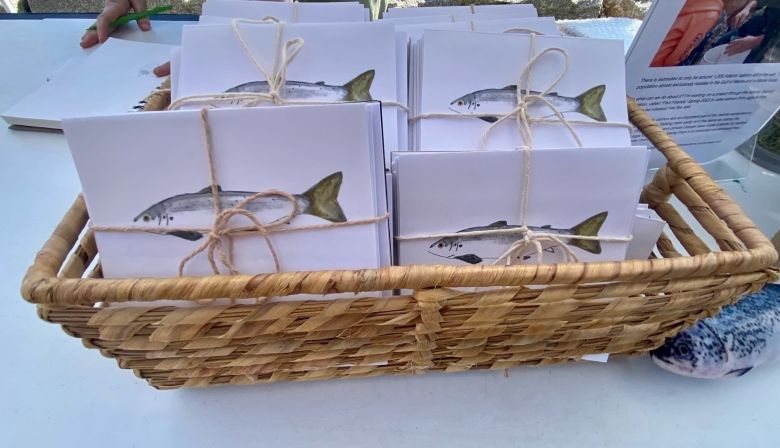
“Ever since I was old enough to explore tide pools, rivers beds, and ponds, I’ve loved everything that lives in water. Growing up near rivers and the ocean instilled in me a strong sense of responsibility to those living things. Throughout my time at The New School, I have taken classes on subjects like climate change, marine biology and animal behavior. As part of my classes, we conducted water testing for The Wells Reserve and the Mousam River, that winds its way through my hometown.
When it was time to decide what I would do for my year-long senior project, my science teacher told me about Fish Friends and I thought it would be great to personally contribute to the protection and restoration of Atlantic salmon. As part of my senior project I’ve accomplished that by educating people about Atlantic salmon, by raising money for ASF and by raising actual Atlantic salmon.
To raise the money to buy the chiller for our tank, I designed and screen printed t-shirts. I also paint watercolor salmon and sell framed originals and printed notecard sets. All proceeds go to ASF.

